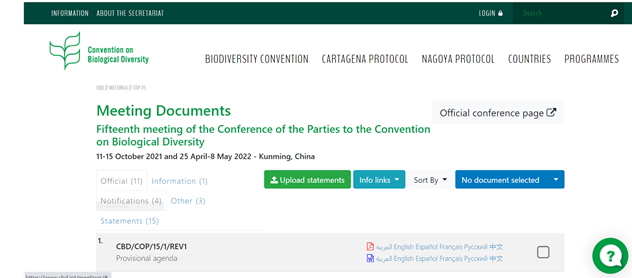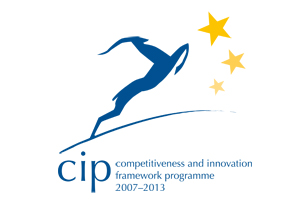Knowledge Networking Portal for Sustainable & Responsible Tourism










 CoP 15 on Biodiversity- Oct 11-15th 2021 part 1- What You Need to Know...
CoP 15 on Biodiversity- Oct 11-15th 2021 part 1- What You Need to Know...
Release Date 11.10.2021
Article on Biodiversity and Tourism in the 2030 Agenda
Author: Gordon Silence
Gordon Sillence – ICT Director of Tourism 2030, and a sustainable development consultant for the past three decades, opens the pandora’s box of the contemporary Biodiversity Emergency, to walk you through this year’s UN CoP 15 (starting today 11th October) to see whether our politicians are shaping our Garden of Eden to have a fairy tale ending or are we just listing to more policy-phased fairy tales …

If you want to have a clear picture of where we really are on the road to sustainable development, check out how the other creatures and their habitats on the planet are doing, since most of them represent vital parts of our life support systems, such as our food chains, our energy sources, even our oxygen sources. CoP 15 (the 15th meeting of the Conference of the Parties on Biodiversity) marks 30 years of high level (ie national government) talks on how to avoid Rachel Carson’s ominous 60’s vision of a ‘Silent Spring’, i.e. when the birds animals, plants and all the micro-organisms that depend on them have all but disappeared, or worse still, become completely extinction.
Welcome to the Anthropocene, the geological era when human action is the main cause of planetary-scale meteorological and terrestrial modifications, and species extinction. Indeed, CoP14 held in the distant pre-covid policy world in the desert sands of Egypt in 2018 already pointed to upwards of 50-60% species loss rates, though official figures toned this down to 30-40%, which is still horrific if not already catastrophic. Now CoP 15, with the ten year failure of not achieving the 2020 Aichi Targets it set itself glaring over the whole process, is set to bring in a new post-2020 ten year policy framework to level the curve or halt the loss of biodiversity in the framework of the 2030 Agenda.
CoP 15 - Part 1
This CoP 15 event is split into two parts - one next week and one next year in China in Kunming in May 2022. Now this week October we have a high-level summit taking place and an online review of the transfer of the cop process from Egypt in Sharm El Sheikh in 2018 at Cop14 to China in Kunming for CoP15. Its all a covid-delayed one year late of course.
You can download documentation of the process from the Excellent CBD online information site which enables us to follow the discussion papers. Go to UN CBD website at.
On that site you will find many themes relating biodiversity to other thematic issues such as climate change. The Kunming Declaration is a good starting point though, as you will see what governments in the CoP15 process are committing to do, and how they phrase that in a 17 point declaration, that is expertly comprehensive in the way it embeds biodiversity conservation into other thematics such as climate change (the second big Agenda 21-inspired CoP Convention), as well as the central 2030 Agenda for sustainable development itself.
For deeper understanding of CoP 15 policy-making turn to the downloadable roundtable discussion support documents that are well worth reviewing from the point of view of understanding how biodiversity links to the overall sustainability implementation agenda. In particular protected areas sustainability, biodiversity and climate change, and biodiversity and sustainable development are being given prominence.
Sustainable Tourism and Biodiversity
Its hard to find any references to tourism or ecotourism, which shows there is a fundamental gap between the rhetoric of this document and the reality of the business machinery that is at the heart of biodiversity loss. Whether it’s the business of developing a destination or small business production and supply processes, all must be made sustainable. And for the past 3 decades this CoP process has singularly failed to deal with the business as usual, security-first agenda for development that rapaciously degrades our planet year in, year out. The post 2020 framework plan must be far stronger on these issues if it wants to make up for the Aichi 2020 target failure.
Fortunately national and local biodiversity action planning has been reaffirmed as a key tool for government implementation of their commitments, and this is the saving grace of the CoP process. Through such plans, and their links to sectoral and regional performance monitoring to meet the 2030 SDG targets, we can see a glimmer of hope in which our politicians and business leaders come to terms with the cost of managing the global commons and all the birds beasts that our our web of life in this fragile biosphere we have inherited as custodians of mother Nature herself.
Tourism 2030 and CoP 15 – Travel Green Planet
Tourism 2030 has developed the Travel Green Planet Initiative to put conservation of biodiversity in protected areas at the heart of the business strategy of sustainable tourism, and then ecotourism in particular. With the aim of certifying all businesses in protected area destinations by 2030, a collaborative ICT system has been developed to implement CoP policy, and turn the rhetoric into action. Sinc ethe last CoP in 2018, the Travel Green Europe process has been bringing together those stakeholders interested in supply chain sustainability certification. Tourism 2030 now has the capacity to act as a local to global ICT hub to help achieve collaborative, multi-stakeholder, multi-level, multi-thematic, joined up implementation programmes wherever biodiversity is threatened by – or can be supported by – sustainable and responsible tourism
But since CoP 14 the world of biodiversity and tourism has been turned upside down, with years of development work in limbo again. The catastrophic impact of COVID-19 on the hundreds of indigenous tourism projects around the world that supported ecosystem conservation or the thousands of eco tourism packages that support protected area conservation management all lost in COVID-19 complete shutdown of the tourism sector.
From CoP 15 to Going Green
With money now on the table to build back better, the new Green Deal in Europe promises the regrowth of tourism as a resilient and sustainable force to shape the European territorial fabric. European Tourism Going Green 2030 exemplifies this process the the sectoral vector of tourism, and is currently developing a cluster collaborative approach to transform SMEs into more sustainable businesses through sustainability certification. Support from the European Union goes to the SMEs who receive expert help to go green from business support organisations collaborating with sustainability information providers.
Newly developed ICT cluster collaboration interfaces in the tourisn2030 portal will support businesses and destinations to green themselves and their supply chains within a regional or thematic cluster framework. Protected area managers and tourism businesses working with nature and biodiversity can form international sustainability supply chains that support the global web of life right down to regional and local territories. In this way the cleverly-crafted commitments of our politicians at CoP 15 can really be used to tackle the biodiversity emergency that threatens us all.
Footnote: the biodiversity and tourism thematic will be joined up to the Climate Change Cop 26 process this November through the Travel Green Planet Initiative.
The CBD CoP 15 Website – Conference Documentation can be found at:
https://www.cbd.int/meetings/COP-15
Gordon Sillence 11-15th October 2021
|
|
|
| Address | |
|---|---|
| Keywords | Biodiversity, ecotourism, green economy, green mapping |
| Target group(s) | Destinations |
| Topics | Certification & Marketing , Natural Heritage & Biodiversity , Value Chain Management & Fair Trade |














































